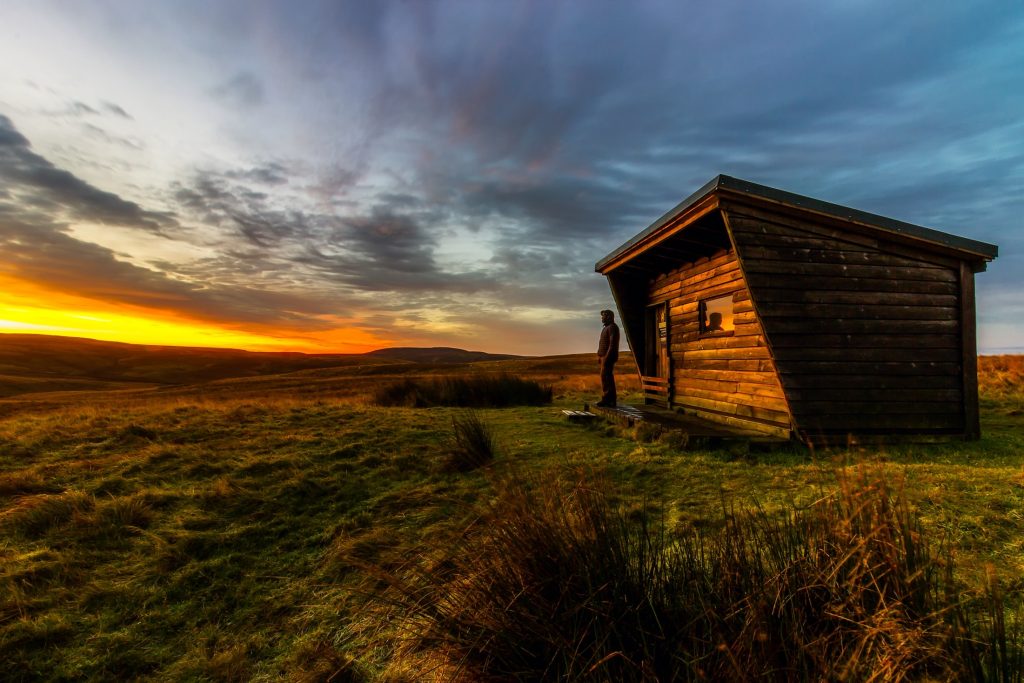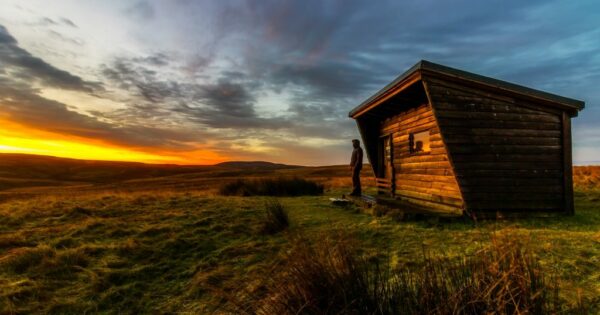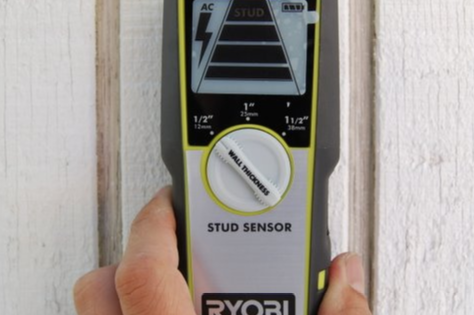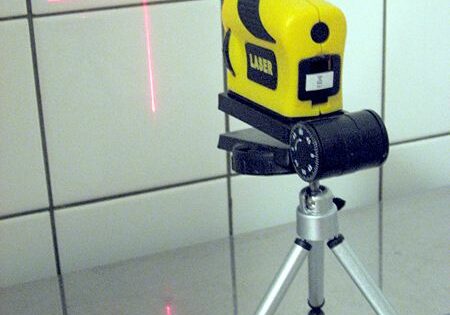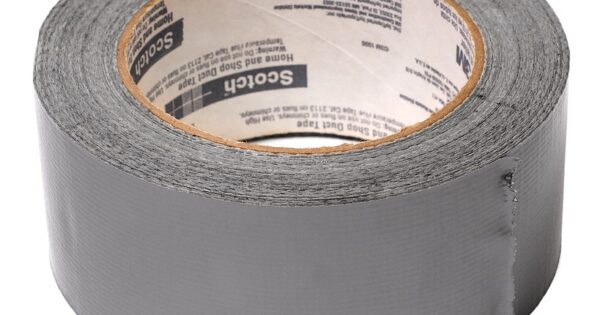Photo: Pexels
The novel coronavirus pandemic created an undeniable shift in how people live their lives. Wasteful lifestyles are not only expensive; they’re also hazardous to our planet and to ourselves. As difficult as isolation and physical distancing might be, many people are starting to realize the benefit and beauty of returning to a simpler way of life in nature. With some DIY skills and the right tools, homesteading in a tiny home might be more accessible and beneficial than you realize.
If you’re feeling inspired live a sustainable, eco-friendly lifestyle, you’ll need to start with the right tools and materials. Whether you’re building an accessory dwelling unit in your backyard or a tiny house in the countryside, here’s how to get started:
What is Considered Tiny?
Before joining the tiny house movement, you might be wondering how small your home needs to be. Will your home need to be 500 square feet or less, or is less than 1,000 square feet small enough? As it turns out, the size of your tiny home will largely depend upon where you’ll live. Local regulations determine the square footage requirements and permits you’ll need. For instance, Go Downsize notes that some parts of Florida require home dwellings to be at least 375 square feet, while Walsenburg, Colorado, waived minimum square footage requirements.
However, before you start building your home, be aware that tiny houses are not yet legal in all areas. Your ability to build a tiny home isn’t just up to your DIY capabilities; it’s also dependent upon local safety and zoning restrictions. Prior to starting construction, contact your local authorities to see what’s legal and obtain any necessary permits. If you’re having trouble finding a spot of land to permanently park your tiny home, you may need to get creative, such as building a tiny house on wheels.
Where to Start
Once you’ve decided to join the tiny house movement and you know where you’ll build your home, you’ll need to determine a plan of action for completing the build. Some people might prefer to use DIY skills to customize and maintain a pre-built tiny house. If you have plenty of experience with larger woodworking or home building projects, you might feel up for the challenge of building your entire home on your own. Regardless of what you decide, here are some options to consider:
Have a Home Shipped to You
Although there are countless sites offering tiny house giveaways each month, your chances of winning a new home are, frankly, quite low. Instead, you’re better off using a pre-existing tiny house kit. For instance, you might purchase one of the popular Amazon tiny house kits that are available for a few thousand dollars.
If you have a higher budget, Boxabl is an up-and-coming brand that gained popularity for their unboxable tiny home. For less than $50,000, you an have a fully-furnished accessory dwelling unit delivered to your doorstep and “unboxed” in your backyard. Each home is built to be energy-efficient with materials that are more resistant to natural disasters like floods or fires.
Download Tiny House Plans for a DIY Build
Another option is to download tiny home plans from a tiny house construction company, from sites like Amazon, or from your favorite woodworking or DIY site. While some companies charge a small fee for tiny house plans, there are also a wide variety of free plans to choose from. For instance, if you’re familiar with woodworking or Do-It-Yourself furniture building, you’re probably already familiar with famous woodworker, Ana White. Consider downloading the free Ana White tiny house plan from White’s website. While you’re at it, you might also search for plans for crafting homemade furniture to furnish your new space.
Tiny House Shells for Sale
Lastly, if building the entire house by yourself sounds like more time and effort than you can spare, consider looking into a tiny house shell for sale. A pre-built tinyhouse shell can be an ideal option if you’re up for the task of customizing and maintaining your home, but don’t have the time or the DIY skills to build the entire shell on your own. Start by searching for shells in your local area, but keep in mind that you might have to travel to get your shell, unless the builder offers shipping and delivery.
Choose the Right Materials for Your Tiny Home
You’ll not only have to consider which materials you’ll need, but also the climate, location and accessibility of your property. Weigh your options when it comes to materials, such as:
Roofing
When it comes to roofing, a metal roof would be the most affordable and durable. Metal roofs are particularly well-equipped to withstand the elements in wet or rainy climates. Meanwhile, clay tiles can help provide extra insulation in arid climates and deserts. If you live in a climate that gets a lot of rain or dry heat, be aware that wood shingles are not a sustainable choice for long-term use in wet areas or extreme temperatures. On the other hand, asphalt shingles can handle most elements, from snow to sun.
Insulation
Fiberglass insulation is both affordable and simple to install. For a natural, organic option, consider denim or cotton insulation. If you’re building your tinyhouse frame with cinder blocks, choose hollow blocks that allow you to stuff more insulation inside.
Windows and Doors
Windows and doors: Before building your DIY tiny home, be sure to measure the exact dimensions of any windows and doors you’ll need. The window an door dimensions will impact your build — and might even impact your home design. Before you get too creative with your home design, keep in mind that custom windows are generally expensive and may not hold up to the elements as well as standard windows and doors.
Get the Best Tools for a DIY Tiny House Build
Just because tiny houses are smaller than standard homes doesn’t mean building your tiny living space will be simple. In fact, building a Do-It-Yourself tiny house requires critical thinking and planning in advance. To ensure success, comfort, and quality of life, you’ll need to get creative about maximizing your space.
As you prepare to build your first tiny home, you’ll need specific tools. Here are a few must-haves:
- Hand-held circular saw: A truly universal tool, this affordable, accessible saw can come corded or cordless. You’ll need this tool to cut wood for framing, trimming out, dados, and a mix of small and long cuts.
- Hand-held drill: An essential tool, look for a corded hand-held drill with paddle bits, diamond tip bits, hole bits, orbital sander attachments, auger bits, and more.
- Finish nailer: Make sure heavy baseboards, cabinets, and crown molding are secure with 15 and 16 gauge nails.
- Portable air compressor: From sanding to wrenching to painting, air compressors use the power of air to supercharge your constructing powers.
Off-Grid Tiny House Considerations
If you plan on building an off-grid tiny house, you’ll need to take some extra steps. Living off-grid means you may not have access to water, electricity or sewage. Depending upon your location, consider designing and building your home using materials that will help boost conservation and sustainability. One key consideration is your power source. For instance, electricity will be a luxury while living off-grid, so you may want to consider battery-powered or cordless tools and solar power. Before you get started, also check any local laws governing tiny homes. Remember, living off the grid is not legal in all municipalities.
Join the Tiny House Movement
Living a sustainable, tiny lifestyle is an adventure on its own. When you combine eco-friendly living with the simplicity and serenity of a tiny house that you built with your own two hands, you’ll tap into a whole new appreciation for your quality of life. Although the transition to the tiny house movement will be a challenge at first, you might find that this new way of life is very rewarding in the end. Start by researching where you’ll build your home and what tools and permits you’ll need. Luckily, many of the tools you’ll use to build your home will also be essential in maintaining it. Tiny living can be peaceful, fulfilling, and healthy. Many people feel whole and uplifted after taking the leap into building a tiny home and embarking upon a more sustainable lifestyle.
One. MilwaukeeTM Fastback® Flip Open Utility Knife
Price: 22
Top Product Features
- Tool-free blade changes
- Metal body
- Overall length 7 ¼-inches
- Built-in gut hook and wire stripper
Product Reviews
- "If the Fastback is not available, our next choice is the original Milwaukee 48-22-1901 Fastback. This knife shares many characteristics with our pick—it has the fast one-handed open/close, the comfortable and secure grip area, and the springy belt hook." -- TheWireCutter.com
- "Simple blade extraction and refill. Locks securely in open or closed position and with the push of one button you can flip it open or flip it closed. It includes a handy wire stripper in the handle as well." – ThoroughlyReviewed.com
- "The blade flips open 3X faster than the typical folding utility knife. You also have the convenience of being able to change the blade without having to use tools. The Fastback also has in integrated gut hook, making it very useful for cutting wires and small things. It also has a wire stripper." – KnifeUp.com
- "Many folding utility knives claim one-handed opening, few truly deliver, especially with the style of the Fastback II. You just thumb the release switch and flick your wrist. The blade flies out and locks, ready for action." -- HiConsumption.com
Two. Bessey Quick-Change Folding Utility Knife Wood Grain Handle
Price: 14.99
Top Product Features
- Attractive wood grain handle
- Foldable; integrated belt clip
- High-quality material; German craftsmanship
- Accepts all standard utility blades
Product Reviews
- "The knife is well made, slim, has an easy, one handed open and close. With a little practice you can change blades with one hand. It's just a great knife. It's heavier than some other folding utility knives but I find that the weight helps me to "feel" which pocket I've got it in (a positive quality)." -- ThoroughlyReviewed.com
- "The Bessey D-BKWH folds like a regular pocket knife, instead of sliding like a box cutter. This, combined with the wood grain handle, gives it an old-timey feel that traditionalists will love." – Wiki.EZVid.com
- "This particular model of the Bessey has a wood grain handle, making it attractive as well as functional. This folding utility knife is compact enough to fit into your pocket, yet easy to grip and control. It accepts all brands of standard utility blades, and has a pocket clip providing easy access." – KnifeUp.com
- "This is without a doubt one of the best looking knives on the list. The handle is wood grain and very slender for easy storage and fast use. The blade can be operated one-handed, though it doesn’t work as quickly as the Fastback and can take a few tries if working with thick gloves." – HiConsumption.com
Three. DeWalt Folding Retractable Utility Knife
Price: 42
Top Product Features
- Metal body for long-lasting use
- Interchangeable blades with built-in storage
- Comfortable slip-resistant handle
- One-handed operation
Product Reviews
- "The best part about DeWalt’s folding retractable utility knife is that it manages to be foldable without sacrificing the quality of its retractable blade. The button mechanism is durable and holds under high pressure, but this knife maintains the portability and ease of use of a folding knife." – TheSawGuy.com
- "Blade changes are rapid thanks to the one-button system that can easily be operated with gloves on. The entirely metal body is durable and weather resistant. The lockback system is nearly as stiff as a retractable but can fold up for easier storage. Even has a wire stripper." – HiConsumption.com
- "If you are confused as to whether you should go for a retractable knife or a flip one, this is the knife for you as it offers both features in a single knife. You have the option of locking the back and slipping the blade away. You can also fold it up if you have less time on your hands." – ExtensivelyReviewed.com
Four. OLFA 18mm Ratchet-Lock Heavy-Duty Utility Knife
Price: 9.95
Top Product Features
- Heavy duty; built tough
- Three blade options: snap, solid, and hook
- Carbon steel blades
- Ratchet lock
Product Reviews
- "The OLFA 5003 L-1 boasts a carbon steel blade that has superior durability, which prevents dullness and will also prevent you from having to change the blade very often." – TheSawGuy.com
- "It is poetic in its simplicity using carbon-steel blades mounted into a stainless steel body that is meant for punishment. If you aren’t slicing up block of wood or cutting acetates down to size, this is probably going to be overkill, but the price is still right. Truly the burly man’s blade." –HiConsumption.com
Five. KOBALT Utility Knife & 11 Blades, Foldable/Quick Release
Price: 10.47
Top Product Features
- Lifetime warranty
- 11 included blades
- Stainless steel belt clip
- All-purpose
Product Reviews
- "The Kobalt Quick Change is made from aviation-grade aluminum, so it's durable enough to live in your toolbox for years. It folds and locks smoothly, so you'll have no trouble getting it to work when you need it. The knife sticks out a little more than we'd like, however." – WikiEZVid.com
- "The body is built of aviation-grade aluminum which makes it tough and light, the texture doesn’t just look cool either, it’ll seriously aid in grip when you need to bear down on the knife. The quick release lever is a nice touch as well, allowing you to quickly switch out blades." – Homethods.com
1. Porter-Cable 20-volt Max 1/2-inch lithium-ion drill-driver kit
Price: 132.99
Top Product Features
- 330 watt high-performance motor
- Built-in battery gauge
- 2 x 20v, 1.5 amp/hour Li-ion batteries + charger included
- 2-speed (0-400, 0-1,600) gear box
Product Reviews
- "At a mere 3.5 pounds in weight and just over 7 inches in length, this drill greatly reduces user fatigue. With a 20V battery, the Porter-Cable can last a long time between charges and boasts of a quick charge time for depleted batteries." – ResearchCore.org
- "While it's not in our top 3 products the Porter-Cable is still a solid drill. It lacks a brushless motor and hammer drill functionality but it is well built, and offers enough power for most DIY projects. If you're looking for a budget cordless drill this is a great place to start." – TheToolReport.com
- "The Porter Cable is a powerful cordless drill that delivers 370 MWO while only weighing in at 3.3 lbs. It peaks at 1,800 revolutions per minute and has 50% more battery life than the generation before." -- ThoroughlyReviewed.com
1. Stanley 25′ Powerlock
Price: 9.88
Top Product Features
- 25-foot length
- Chrome case resists shock
- True-Zero end hook
- Mylar coated for extended life
Product Reviews
- "A great balance of price and sturdiness, the Stanley Powerlock is available in lengths from 12 to 36 feet and comes in a high-impact chrome ABS plastic housing. True to its name, it promises a secure lock that won't slide over time like many models." – Wiki.EZVid.com
- "The Stanley Powerlock is our favorite 25-foot tape measure by a mile, not an inch. With a lifetime warranty, a strong belt clip, and a blade that stood straight for just over seven feet—longer than Stanley advertises—it’s perfect for the home or the job site." – Reviewed.com
- "Standard features include a lockable blade for precise measurements and minimal slippage, a belt hook for easy access, a 1-inch wide blade for easy reading, and 16-inch and 19.2-inch stud center markings. Plus, Stanley has added a heat-treated spring to increase the tape’s lifespan." -- ThoroughlyReviewed.com
- "Stanley tape measures are something of a benchmark. They have been around for generations and, arguably, are the original retractable tape measure brand. Hiram Farrand patented the modern spring-operated retractable tape measure in the 1920s, but the product rights were sold to Stanley Works." -- BusinessInsider.com
- "A reliable tool from a popular manufacturer at a price that competitors can't beat. If you're watching your budget, this is the one to buy. A sturdy tape measure by a trusted brand. Well-made, impact-resistant chrome base and secure locking function. Limited lifetime warranty." – BestReviews.com
- "This unit is the “tried and true” design of tape measures that can only be called “classic”. The blades on the tape are covered in a Mylar coating so that retracting the tape is smooth and prevents excessive wear over time." – TheDearLab.com
- "The body of the tape measure is made of durable material. A high impact ABS case enclose the body of this product which also has an added rubber mold for more strength. A heat-treated spring is responsible for its easy recoil when not in use." -- BestAlyze.com
1. Gorilla Tape
Price: 8.49
Top Product Features
- Weather resistant
- Available in 1” to 2.88” widths
- Double-thick adhesive sticks to rough surfaces
- Made for tough jobs
Product Reviews
- "Double-Thick Adhesive; Grips smooth, rough and uneven surfaces. Tough, Reinforced Backing; the tight weave contributes to the heft, but Gorilla Tape can still be ripped by hand. Rugged, Weather-Resistant Shell; Withstands moisture, UV rays and temperature extremes." – PopularMechanics.com
- "Gorilla Tape is manufactured with a highly concentrated rubber based adhesive – two to three times as thick as traditional duct tape. The result is a tape that fills gaps and penetrates Rough surfaces. It sticks to Rough and uneven surfaces, including wood, stone, stucco and brick." – Amazon.com
- "Made with double thick adhesive, strong reinforced backing, and a tough all-weather shell, it’s the biggest, strongest, toughest thing ever to happen to duct tape. To us, it’s made the way tape should be: The toughest on planet Earth." -- Top10HomeImprovementBestSellers.com
- "Outstanding toughness and durability, extremely thick tape that offers good strength and water resistance ratings, black color looks better on most repairs than silver/gray of standard duct tape." – BusinessInsider.com
- "This double thick adhesive tape surpasses ordinary duct tapes, making the list of uses virtually endless. Made with double thick adhesive, strong reinforced backing, and a tough all-weather shell, it’s the biggest, strongest, toughest thing ever to happen to duct tape." -- WonderfulEngineering.com
- "The abrasion resistant backing cloth is tougher than others as well, with a tighter weave, but still can be torn by hand. UV and water resistance round everything out, making this tape perfect for just about any need." – Bestcovery.com
1. ThruNite Archer 2A V3 Flashlight
Price: 29.99
Top Product Features
- Five modes: strobe, low, medium, high, and firefly
- Uses 2 AA batteries
- 28-day continuous run-time (firefly mode)
- Impact resistant
Product Reviews
- Convenient 2-button interface, tail switch and side button to control the on/off and mode choosing. Compact and slim body shape made Archers are ideal for outdoor use, emergency preparedness, everyday carry, or use by first responders." – Reviews.com
- With a two-button interface, four brightness levels, and a handy design, the ThruNite Archer 2A V3 is a versatile tool appropriate for professional applications. But it's also relatively affordable, making it accessible to anyone in need of a reliable source of light." – Wiki.EZVid.com
- The ThruNite has the widest range of brightness settings of any light we tested, including a very dim and very useful firefly mode. The blinding strobe mode is useful in an emergency—but the ThruNite’s design makes it easy to avoid activating the strobe, an advantage over most competitors." – TheWireCutter.com
- It offers many features usually reserved for more expensive flashlights. Those include a range of brightness settings down to a very dim "firefly mode" and a strobe setting for emergencies. It can even remember the last brightness setting you've used." – PopularMechanics.com
1. DeWalt DW088K Self-Leveling Cross Line Laser
Price: 143.34
Top Product Features
- Pulse mode
- Over-molded housing; debris resistant
- Magnetic pivoting base
- Compatible with 1/4-inch thread tripod (not included)
Product Reviews
- The DeWalt DW088K weighs in at just over three lbs., so can be easily transported from job site to job site. It also comes with a hard-sided kit box for transport and storage. The unit itself is housed in a very durable water and debris resistant casing, and has a magnetic pivoting base." – LaserLevelGuide.net
- You don’t have to be a pro to put up trim and cabinets. A solid self-leveling laser will guide you every step of the way, and IP54 water and dust resistance will keep it running for a long time. Guaranteed accurate to an eighth of an inch at 30 feet, the level runs on 3 AA batteries and it’s simple to set up." – WoodToolsGuide.com
- The laser projects bright crossing horizontal and vertical lines with accuracy within 1/8 of an inch at 30 feet. Its full-time pulse mode allows for use with a detector, maintaining full brightness for visibility while extending the working range of the laser to 165 feet." -- RenoHardware.com
- Operators should have no problems mounting this device on metal surfaces with its integrated magnetic pivoting base. There’s a tripod mount located on the bottom, which fits well with most camera tripods. Then there are magnets in the mount that facilitate ease attachment to any metal." – PowerHandToolKit.com

